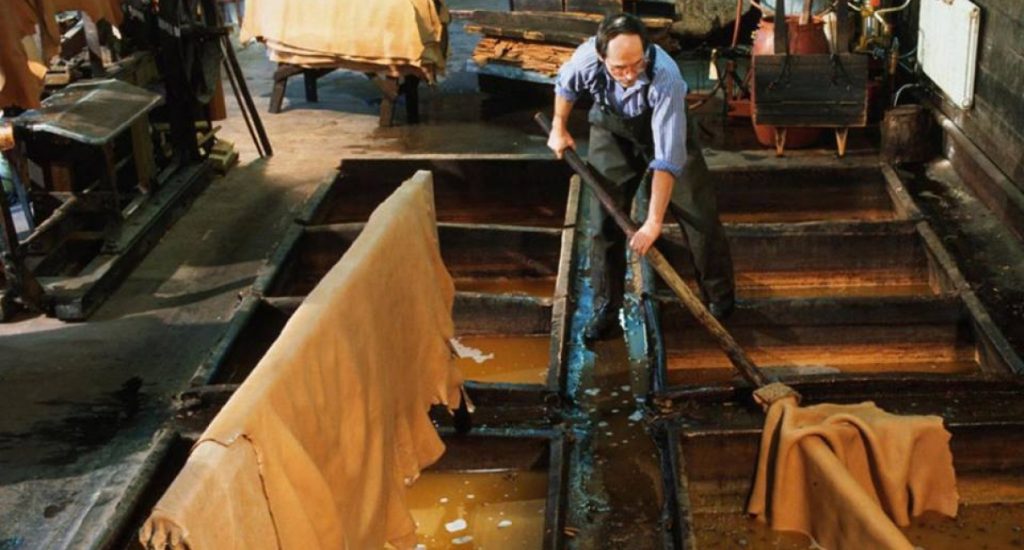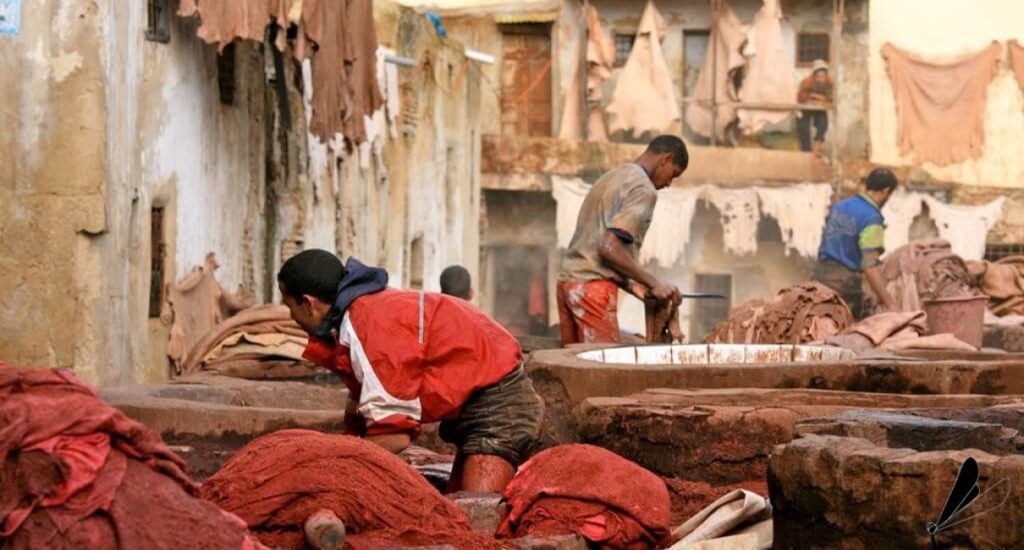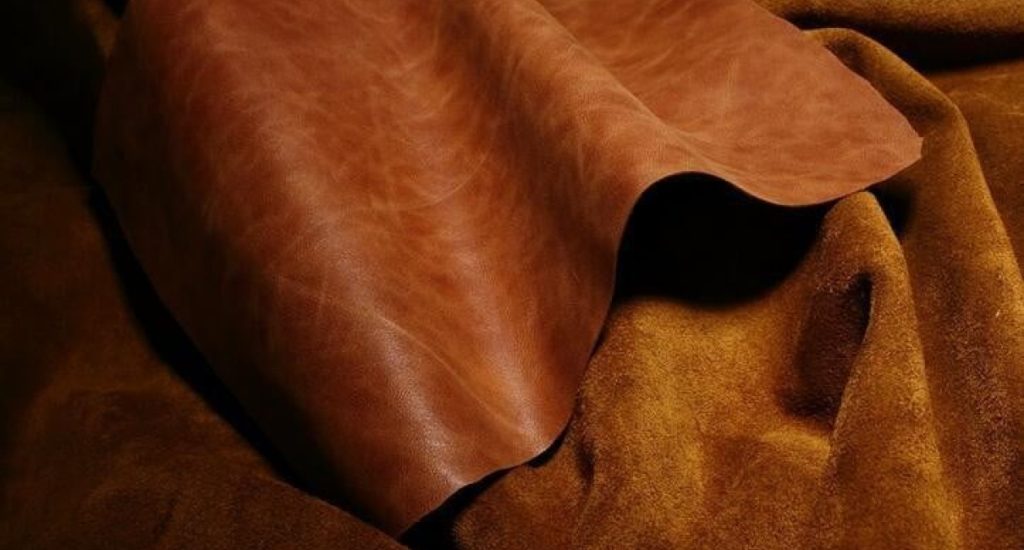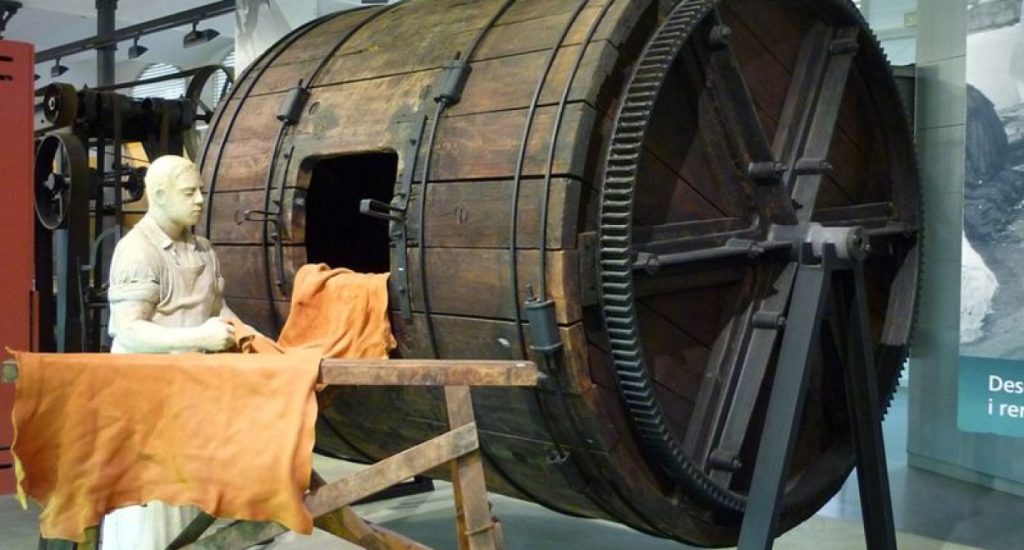Cowhide is the most commonly used material for leather products such as: leather shoes, leather handbags, leather wallets, leather belts, etc. And to create those products, the artisans have a way to treat them. How to deal with cowhide, we will learn through 3 stages of the basic tanning process:
While this is not an important step in the tanning process, it is a necessary first step. The purpose of this stage is to remove all the excess, unnecessary components, such as: connective tissue, epidermis or easily decomposed substances and create a bond between the tanning agent and the collagen fibers at this stage. leather tanning.
In this preparatory step, the processing of cowhide is done through the following steps:

* Humidification
– Purpose: to restore the amount of water lost due to preservation (reduced from 35-45% to 60-70% if preserved with salt, and from 18-50% if stored dry). This stitch will help the skin fiber restore its original structure.
– Pay attention to the problem of time in this stage because if it is too long, it will cause bacteria to multiply and cause a part of collagen in the skin to decompose.
– Suitable temperature is 26 – 27◦C.

* Waxing beef, soaking in lime
– Purpose: to remove the hair layer and removes the epidermis, epidermis as well as subcutaneous fat.
– This is a very complicated step, requiring strict control over the use of chemicals, water, temperature and time.
– Sulfuranatri is an alkali that plays an important role in the process of cleaning hair and pores and has a pH of 12-13.
– With modern tanning techniques, lime soaking is carried out in fouslon at a speed of 3-4 rpm, time is 12-18 hours and inverting for 10 minutes/hour to allow the solution to penetrate evenly onto the skin.
– The water used to wash the leather is hard water, so on the surface of the skin, a CaCO3 layer will form, making the finished leather product of poor quality. To avoid this situation, we need to add 0.5% lime to the amount of skin.

* Thinly sliced
This step is done on a sawing machine and depending on the intended use, the layers of sawn skin have different thicknesses.
For example: The skin after being limed has a thickness of 4 mm, after tanning it is 2.8 mm, after shaving it is 2.6 mm and the finished leather is only 2.3 mm.
* Wipe off with lime and soften
– The purpose of lime bleaching is to remove alkaline chemicals to avoid affecting the quality of the leather.
– The purpose of the softening step is to give the skin a smooth surface and remove all swelling and grafting on the kidney surface. This stitch is also intended to increase the elasticity of the finished skin. However, if the softening process is too long, too strong will reduce the tensile strength. At the same time, depending on the purpose of using the skin, there are different softening modes.

– This is the most important step in how to process cowhide to turn bare skin into leather.
– The chemical used to tan cowhide is potassium bichromate: K2Cr2O7. When hydrolyzed to form alkali chromium salts:
K2Cr2O7 + 3H2SO4 + R —› K2SO4 + 2CrOHSO4 + RO + H2O
R here is the reducing agent (gluco or Na2S2O4). The reaction that gave rise to the hydroxide compound is the chromium alkali salt, the solution is acidic. Hydrolysis can continue if acid is added to the solution and can also return the products of hydrolysis to chromium sulfate.

– Currently, people use different neutralizing agents to gradually increase the alkaline lifting effect, such as: dolomite mineral, Mentrigan MOG.
– After 2 hours of rotation, we need to check the penetration of acidification, after reaching we give: 6-8% Cr2O3 powder form, rotate for 6-8 hours, test the penetration after 3-4 hours, continue 0.5 – 1% Mentrigan MOG, spin 1-2 hours. Also test temperature and pH.
– For alum skin, it is necessary to use an anti-mold agent (usually 0.3-0.5% Preventol WB).
Correction and finishing of cowhide leather
After the above two stages, the skin still has a very high moisture content (60 – 65%), does not have the necessary flexibility, the skin surface is dry and very easy to absorb water. Therefore, it must be corrected and perfected.
We have to perform basic steps such as: composting, pressing, thinning, neutralization (for chrome leather), oil-based dyeing, drying, so that the leather has a moisture level of 12-15%, then They are softened, polished, etc. Their purpose is to make the leather uniform in color, and at the same time, overcome surface defects to meet the diverse uses of buyers.

The three complicated and meticulous stages of cowhide processing or tanning method have shown the ingenuity and sophistication of the artisans. However, to create sophisticated and beautiful products depends on the processing and finishing of those leather panels.